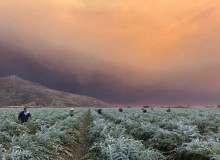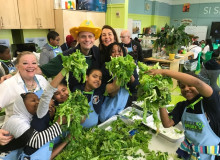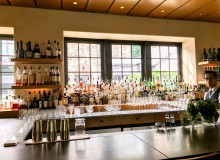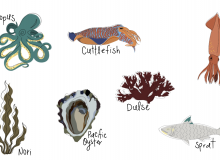Agriculture
Planet Forward FAO Fellow | Emerson College
Farming sustainably is already hard work, and young potential farmers need to be creative to find a foothold in an aging industry.
Northwestern University
According to The Nature Conservancy, intense weather will transform hydrology, health, economics, and ecosystems in Illinois, as reported by Eva Herscowitz for Medill.
The University of Wisconsin-Madison
Old Mason jars filled with heritage corn and tins of commercial tobacco are what planted the initial idea for the Goldman Lab’s Inter-Tribal Seed Stewardship Initiative.
George Washington University
In this short film, Planet Forward Comcast Sustainable Storytelling Fellow Francesca Edralin explores how classroom gardening can be used as a tool to address food insecurity.
Arizona State University
The race to deliver fresh foods during peak harvest season means farmworkers are facing the threats of climate change acceleration and COVID-19.
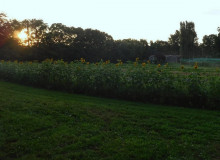
Sunflower bed in bloom in the fall of 2019 at Homefields Incorporated, a 23-acre community-led farm. (Max Sano/Franklin & Marshall College)
Planet Forward Senior Correspondent | New York University
The U.S. food supply chain needs a complete makeover in light of the COVID-19 crisis. A new plan should incorporate several areas of focus, including expanding funding into current organic and regenerative agriculture.
George Washington University
The Bronx is home to many things — Yankee Stadium, the Bronx Zoo, the birth of hip-hop — and most recently, an idea powerful enough to change the world.
The George Washington University
To lower their environmental impact, restaurants are transitioning their operations to be more sustainable and climate friendly.
George Washington University
An exploration of the untapped value of cephalopods and algae in a sustainable seafood diet.
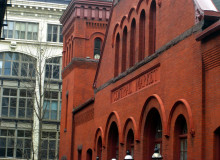
Lancaster Central Market in Lancaster, Pennsylvania, faced drastic customer reductions at the beginning of the pandemic, resulting in the closure of several stands, and yet most still endure. (Jared Kofsky/PlaceNJ.com/Creative Commons)
Planet Forward Senior Correspondent | New York University
Why do people continue to go hungry in one of the wealthiest nations in the world? And what can we do about the food system to prevent this from happening?

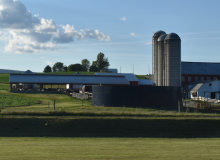
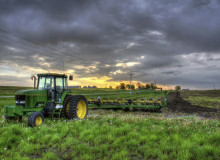
_0.jpg%3Fitok=NCsEOErG)

